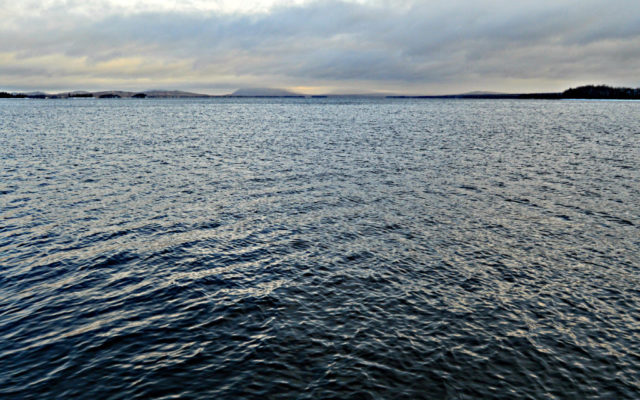
Stocking Haymock Lake with lake trout flies in face of preserving wild native fish
By Bob Mallard
The Maine Department of Inland Fisheries and Wildlife recently published a proposal to stock lake trout in Haymock Lake in the Allagash Region.
The goal is to increase lake trout numbers to try to reduce nonnative smelt abundance through predation. The impetus behind the proposal is to protect the lake whitefish population, according to the MDIF&W.
To be clear, lake whitefish are in trouble in Maine with somewhere around 50 native populations now listed as extirpated. But lake whitefish are not native to Haymock Lake. They were introduced by MDIF&W to increase the number of populations.
A controversial management tool, this is referred to as “surrogate waters” or “wild refuges”: “Lake whitefish in Haymock Lake are the result of a 1962 transfer of adult dwarf-form lake whitefish from Second Musquacook Lake.” — MDIF&W
Lake trout are native to Haymock Lake, but occur naturally at “relatively low levels,” MDIF&W says. Angler use is reported to be “very low” compared to historic levels. Catch rates for lake trout are also said to be very low.
In 1971, MDIF&W imposed restrictive regulations on lake trout and initiated a stocking program to “boost the wild population and improve angling.” Stocking was suspended in 2004 when numbers rebounded.
Whether it was restrictive regulations, decreased angling, stocking or some combination that led to the increase is unknown.
As for the introduced lake whitefish, according to MDIF&W they do not grow large enough to provide a recreational fishery. Apparently, their primary role post-introduction was to provide forage for lake trout.
This begs the question, what did the lake trout eat before we introduced the whitefish? It wasn’t smelt as they were not introduced until a half a century later:
While the proposal says the intent is to “Resume stocking of lake trout,” Haymock Lake has not been stocked in 20 years. The term “resume” is misleading in this context because while lake trout are a long-lived species, stocked fish usually do not live as long as those born in the wild.
Therefore, most of the lake trout in Haymock are likely wild and it is now a self-sustaining population.
Haymock Lake has a tributary into (Big) Eagle Lake. Eagle Lake has not been stocked since 2010, and has only been stocked eight times, all of which involved lake whitefish in an attempt to address declining numbers.
Lake trout are native to Eagle Lake, and since they have never been stocked in the lake, the population is likely genetically pure.
It is fair to say that some number of lake trout stocked in Haymock Lake will find their way into Eagle Lake. In fact, while they downplay it, the MDIF&W acknowledges it in the proposal.
In addition to the possibility of genetic swamping, stocking has the risk of introducing hatchery-borne diseases, parasites and viruses, as well as non-target species, which has happened in the past:
“If stocked at very high densities, some lake trout could be expected to migrate down the outlet and end up in Big Eagle Lake. The potential for a few extra lake trout in Big Eagle is not expected to impact the lake’s sport fishery or fish populations,” the MDIF&W said. “Haymock Lake is not a state heritage fish water due to the long-standing lake trout stocking program.”
Again, this is misleading as it has not been stocked since 2004, or in 20 years, and the use of the term on-going makes it sound like it is happening now.
As it now stands, Haymock Lake is just 5 years away from being designated a State Heritage Fish water. If this stocking is allowed, the clock would be set back to zero and it would not be eligible until 25 years after lake trout stocking is suspended.
The state refers to the lake trout fishery in Haymock Lake as “underachieving.” While the stated goal is to protect lake whitefish stressed by the introduction of nonnative smelts, there are several references to them providing forage for lake trout. This makes it look like this is as much about propping up a faltering lake trout fishery as it is saving whitefish:
Lake whitefish are in trouble because we moved smelt around, many of which were state-sponsored actions known as “transfers.”
Then we started moving lake whitefish around to try to save them. Now we want to move lake trout around to help the whitefish we moved around that are in trouble because someone moved smelt around.
Stocking should be the last, not the first, line of defense. We should be looking at other less intrusive methods such as targeting smelts during the spawning run using e-fishing.
Temporarily opening the lake up to commercial smelting would likely have more impact, plus be cheaper and less risky than stocking lake trout.
Most importantly, removing from consideration a high quality wild native brook trout water that is just 5 years away from State Heritage Fish designation so we can stock lake trout over wild native lake trout to protect introduced whitefish flies in the face of what our top priority should be, the preservation of wild native fish.
Bob Mallard is the former owner of Kennebec River Outfitters and a Registered Maine Fishing Guide. Bob can be reached at BobMallard.com or Info@BobMallard.com.